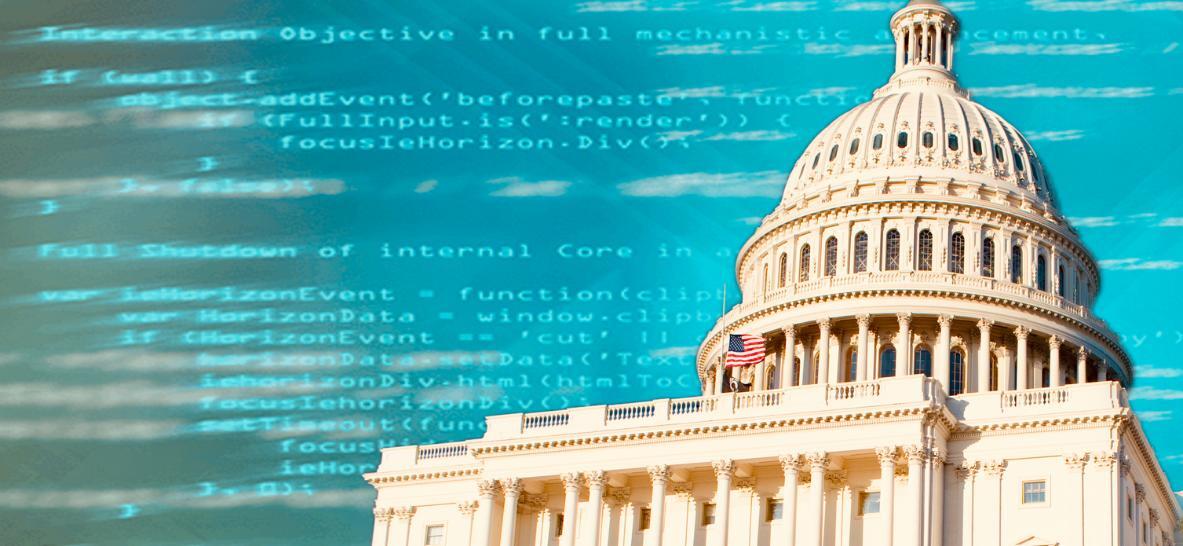Federal Government Proposes Major Technology and Defense Investments in the New Reconciliation Bill
Government | Technology | 4 Min Read
Although we’ve seen some budget cuts and trimming of contracts over the past few months, we can expect to see some increased funding in certain areas with the new Reconciliation Bill. The Reconciliation Bill, also called the One Big Beautiful Bill Act (OBBBA), was signed into law last week outlining a number of funding provisions, including substantial increases for technology and defense. Let’s review the specific areas the OBBA has targeted, and what contracting opportunities we anticipate coming out of this bill, especially for GSA Multiple Award Schedule (MAS) contractors.
Increased Investments from the One Big Beautiful Bill (OBBBA)
Unsurprisingly, the main areas for increased investment include cybersecurity, Artificial Intelligence (AI), defense, and law enforcement spending. But what kinds of projects will the spending go toward? We’ll dive into the specific missions the OBBBA intends to accomplish with these investments.
Cybersecurity
Section 20006 of the One Big Beautiful Bill Act, “Improving the Efficiency and Cybersecurity of the Department of Defense” allocates investments for cybersecurity. These include:
- $150M for business systems replacement to accelerate the audits for financial statements of DoD
- $200M for deployment of automation and AI for DoD’s audits
- $10M to improve budgetary and programmatic infrastructure of the Office of the Secretary of Defense
- $20M for defense cybersecurity programs of the Defense Advanced Research Projects Agency (DARPA)
Section 2005, “Enhancement of DOD Resources for Scaling Low-Cost Weapons into Production”, outlines several areas to increase funding for cybersecurity and AI. Here’s a few examples:
- $1.4B for the expansion of small unmanned aerial system industrial base
- $400M for the expansion of advanced command-and- control tools to combatant commands and military departments
- $500M for the accelerated development and integration of advanced 5G/6G technologies for military use
- $750M for the acceleration of innovative military logistics and energy capability development and deployment
- $400M for the expansion of the defense manufacturing technology program
- $125M for the acceleration of development of small, portable modular nuclear reactors for military use
- $90M for APEX Accelerators, the Mentor-Protégé Program, and cybersecurity support for small non-traditional contractors.
Artificial Intelligence (AI)
In both the Biden and Trump Administrations, AI has become a priority, but they differ in their plans for AI development. The Trump Administration is focused on rapidly developing AI and creating infrastructure investments rather than creating regulations and guardrails, which is what the Biden Administration was working on.
Here’s what the OBBA has in store for AI:
- $450M for the application of autonomy and AI capabilities to naval shipbuilding
- $115M for accelerating nuclear national security missions through AI
- $124M for improvements to Test Resource Management Center AI capabilities
- $250M for the expansion of Cyber Command for AI lines of effort
Law Enforcement and Department of Homeland Security Spending
In addition to the Department of Defense (DoD) getting a load of the funding, the Department of Homeland Security (DHS) is expected to get an influx of funds from the reconciliation bill. Here are some of the highlights from the bill:
- $4B for Customs and Border Protection (CPB) to hire 5,000 officers and 3,000 border patrol agents
- $8B to hire 10,000 new officers for ICE through 2029
- $45B for the construction of new immigration detention centers
- $50Bfor the border wall and border security technologies
- $813M for CBP patrol vehicles
- $700M for IT investments at ICE
- $25B for Coast Guard to invest in shipbuilding, aircraft and facilities maintenance
What Contractors Can Expect from the New Reconciliation Bill
We can definitely expect to see an increase in opportunities related to the spending categories above: cybersecurity, AI, and law enforcement. We also anticipate more spending in auxiliary areas such as construction, security services, technology, defense manufacturing, etc. If you offer solutions in these industries, it’s important you are preparing for the influx of opportunities, especially now that we are in the federal government Q4 spending spree.
Of course, with increases in budget, there must be a balance somewhere. Within the One Big Beautiful Bill, there will be cuts to social assistance programs such as Medicaid and SNAP, and cuts to clean energy incentives. So, we can expect to see less spending on clean energy, Electric Vehicles, and social support services.
GSA MAS Spending and Upcoming Procurement Changes
Along with the OBBA are several Executive Orders promoting efficiency in the government. One of these initiatives is consolidating most procurement of common goods and services under the General Services Administration (GSA). This includes moving Governmentwide Acquisition Contracts (GWACs) under GSA. With this transition, a lot of the opportunities above are anticipated to flow through the GSA MAS Program.
If you’re currently a contractor, we suggest you prepare your contract for future opportunities. No matter what you offer to the government, it’s important now more than ever to keep your GSA Multiple Award Schedule (MAS) compliant. The Trump Administration is looking to trim down, and they are looking for contracts that are not meeting compliance standards or performing well.
If you are looking to get a GSA Schedule, we suggest you start soon. With these changes and a smaller federal workforce, the lead times to get a contract are lengthening. If you have questions about your GSA Schedule or are interested in getting one, we are here to help.






